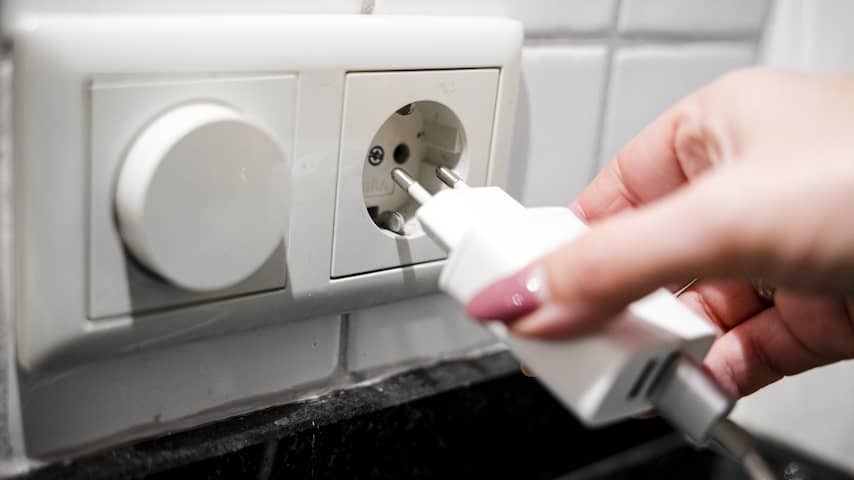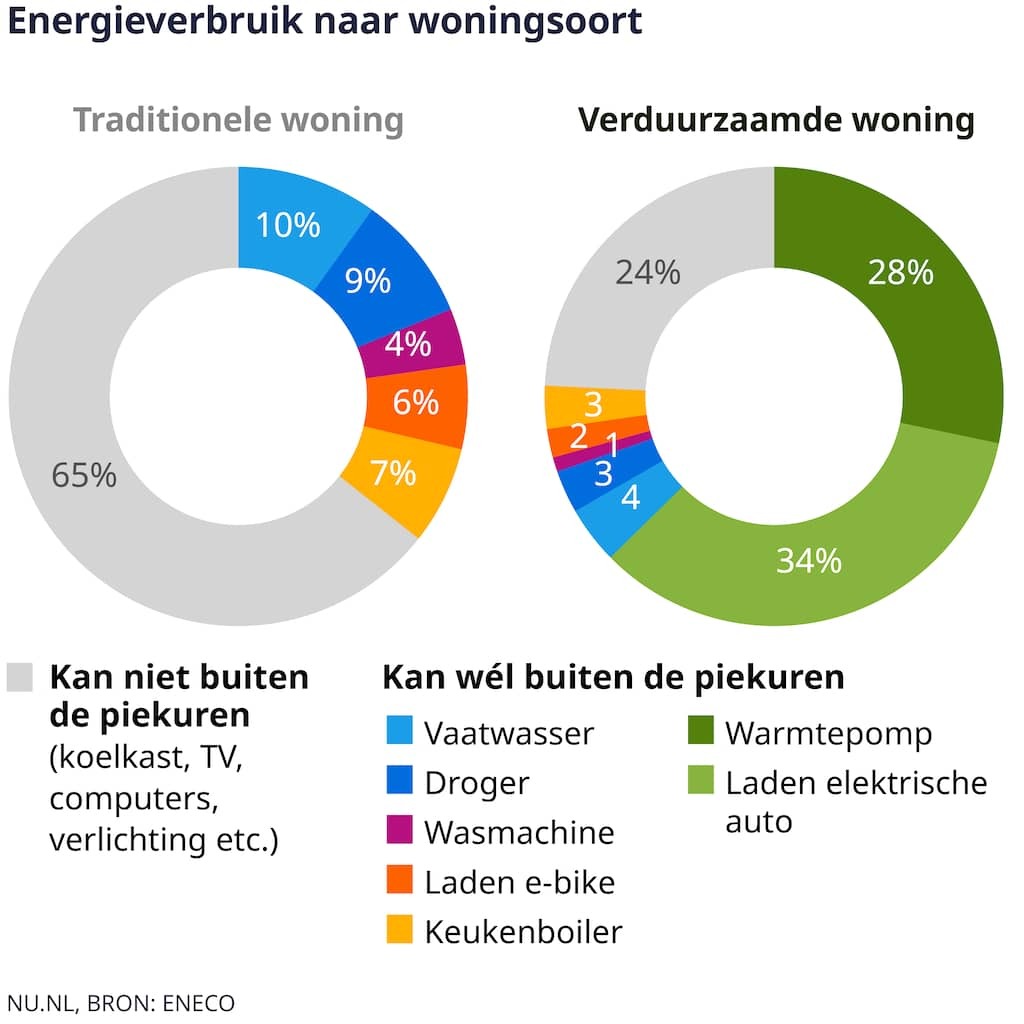
After smaller energy suppliers, now Eneco is introducing off-peak rates for daytime electricity consumption. Where traditionally electricity was cheaper at night and it was worthwhile to do laundry then, avoiding the peak is now also interesting in the afternoon.
Eneco will start offering the annual contract with new off-peak hours in August. Customers who sign the contract will then receive a 30 percent discount on the electricity price, excluding VAT and energy tax. This rate applies from 10 PM to 5 AM and between 10 AM and 5 PM.
Eneco is not the first to do so. Last year, Greenchoice started with a lower daytime electricity rate. Budget Energie even offers free electricity hours during the day, but only on weekends and in the summer, when solar panels generate the most electricity, and there is therefore a lot of electricity supply. However, Eneco is the first of the three major suppliers (with Vattenfall and Essent) to introduce off-peak discounts for daytime.
Energy transition expert Sanne de Boer from RaboResearch believes this is a good development. “More providers will follow. Because market prices for electricity in the middle of the day and at night will become increasingly lower compared to the peak moments in the morning and evening.”
The growing number of wind turbines and solar panels means that the purchase price of electricity for energy suppliers is more often approaching or even below zero euros. These low electricity prices on sunny days are not only in the summer but also in some winter months, it has been noted in recent years. That is why energy suppliers are opting for the introduction of off-peak rates during the day.
Nightly off-peak hours have existed for decades
Incidentally, an energy contract with nightly off-peak hours has existed for decades and several suppliers offer it. Electricity was cheaper because companies were idle at night. So that there was less demand for electricity than during the day and therefore prices were lower. But now there is suddenly also a lot of extra electricity supply when the sun shines.
Contracts with off-peak rates for the night lost some of their popularity due to the arrival of alternatives. Such as a contract with dynamic energy prices, where prices connect every day and every hour to the supply of and demand for electricity in the country.
Eneco calls the new VoordeelMomenten contract with the discount therefore “a refresh” of the old variant with off-peak hours. “The normal electricity rate applies during peak hours and that is fixed for a year,” says Eneco spokesperson Rianne de Voogt.
Off-peak prices can help relieve the crowded electricity grid
According to the supplier, a household with a heat pump and electric car with its own charging station can save a lot on the annual bill. These appliances consume a lot of electricity and that energy consumption can easily be shifted to the more favorable off-peak hours. Eneco bases its calculation example on the average annual consumption of a sustainable household. There, the company sees a maximum saving of 233 euros.
A household without a charging station or heat pump has lower electricity consumption and can save much less by shifting electricity to the hours with discounts; about 30 euros per year according to Eneco. In the graph below you can see the difference between the homes in how much electricity can be moved outside peak hours.

Off-peak prices during the day may help against the overcrowded electricity grid, which almost the whole of the Netherlands is struggling with. Especially during peak hours in the morning and afternoon, electricity consumption can be postponed. This can be done by doing laundry at another time or charging the electric car.
Around noon there is sufficient electricity and space available on the electricity grid. With the off-peak rates, customers save on their consumption and turn on fewer appliances during peak hours. “More measures to reduce congestion on the electricity grid remain necessary, but this relieves the grid a little,” says De Boer.
The national electricity grid is also being expanded in the meantime. This will last until at least 2035.
‘Part of our customers find dynamic contracts too risky’
Eneco does write on the site that dynamic contracts even more emphatically have an electricity price that may be very favorable over part of the day. Especially for people who can easily charge the car when the sun is shining, a dynamic contract can provide more savings. Here, households pay the current electricity price every hour and benefit the most from low or negative rates.
“But part of our customers find dynamic prices too risky. There is always a chance of extreme price peaks,” says Eneco spokesperson De Voogt. “The new contract with fixed prices and off-peak hours is therefore a nice solution.”
Energy expert De Boer also emphasizes that fixed and variable contracts are generally less advantageous than a dynamic contract. “You always pay a little more for the certainty that your electricity price cannot change just like that.”